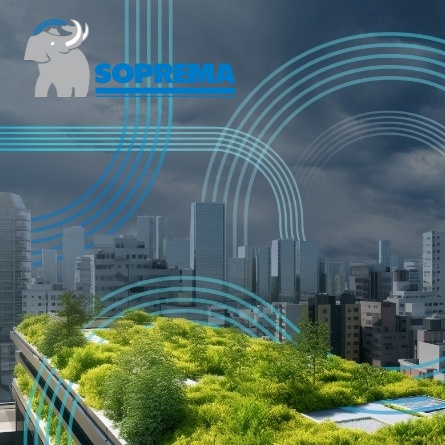Adele Peters of Fast Company writes:
If you walk up to the roof of a social-housing apartment building in Amsterdam, you’ll see a sprawling garden covered in plants. Hidden under the flowers and grass is an extra layer: a thin reservoir that can store rainwater in storms.
The city’s network of blue-green roofs have water-storing technology to help prevent flooding.
Down the street, the same water-storing technology sits under another rooftop garden. It’s also installed on multiple other buildings in flood-prone Amsterdam neighborhoods. The city now has a network of “blue-green” roofs—designed to boost biodiversity, keep buildings cooler in heat waves, and help deal with increasingly frequent extreme rain.
The city government in Amsterdam started looking for new ways to deal with rain more than a decade ago, after a storm in Copenhagen dump around six inches of rain in less than two hours, leading to severe flooding. Climate change is making heavy rain more likely, and the traditional sewer systems in most cities can’t keep up. Amsterdam’s government considered places to add new green space to help capture rain. But in a city that’s already densely built, there wasn’t much room for new parks.
City leaders started asking a new question: “How can we make better use of the buildings that exist—and groups of buildings—to capture and store more rainwater?” says Brian Schmitt, an account manager in urban climate resilience design and engineering for Orbia, the company that makes the blue-green roof technology.
How a blue-green roof works
A typical green roof, with a thin layer of vegetation, can also store some water when it rains. But if it keeps raining, or in a heavy storm, the water washes off. A blue-green roof system includes a retention unit under the plants and soil. The system connects to weather forecasts. If rain is expected and the reservoir is already full, a valve can automatically open to slowly let water out in advance, making room for more.
One study found that the technology can capture between 70% to 97% of the rain in that falls on a roof in an extreme storm. A basic green roof, by contrast, can only capture around 12% of the rain. “You are capturing more water and you can monitor how much you are storing at any time,” Schmitt says. By keeping rain on rooftops, it’s less likely that the sewer system will overflow and flood streets. Amsterdam’s water agency used Autodesk software to model the benefits in a particular neighborhood. While a single roof wouldn’t make a huge difference, the team found that if all the suitable roofs were converted, flooding could drop by 60%.
Read more: Amsterdam’s gorgeous green roofs have hidden reservoirs to capture rainwater
 Greenroofs.comConnecting the Planet + Living Architecture
Greenroofs.comConnecting the Planet + Living Architecture










